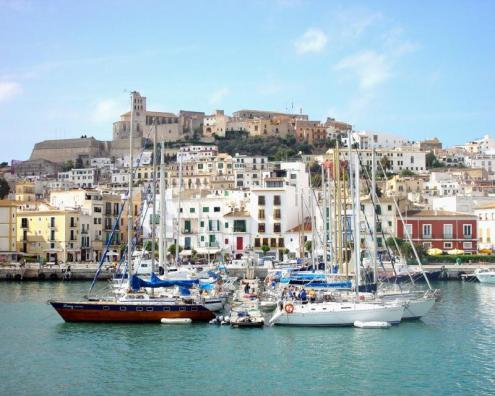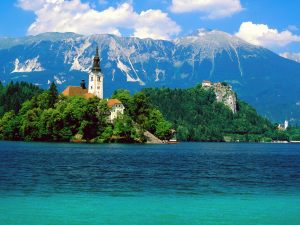Ireland Travel Guide
After many years of problems, it seems that Ireland Travel Guide can finally breathe a sigh of relief. Of course, the current situation leaves much to be desired, but at least now the country returns to its status as a major tourist attraction in Europe. Take a tour of Galway and soon you’ll understand why it has been called one of eight cities in the world sexy. Mingle with people in Cork for a multicultural celebration of art and gastronomy cosmopolitan luxury catering to all tastes. Above all, get a taste of Dublin’s art scene and vibrant nightlife to see why it is considered one of the youngest cities in Europe.
However, schools are full of tourists from the Irish experience. Movement off the beaten track to discover the most stereotypical of the less vehement, with its ring of coastal mountains extends refreshing greenery, sparkling lakes and the glorious monuments of the past.
Inner Carniola
Inner Carniola is a traditional region of Slovenia. It was a part of the historical Habsburg crown land of Carniola. The traditional administrative and economic center of the region is Postojna, and other minor centers include Logatec, Cerknica, Pivka and Ilirska Bistrica.
Constitution
 The Spanish Constitution of 1978 is the culmination of the Spanish transition to democracy. The constitutional history of Spain dates back to the constitution of 1812. After the death of Francisco Franco in 1975, a general election in 1977 convened the Constituent Cortes (the Spanish Parliament, in its capacity as a constitutional assembly) for the purpose of drafting and approving the constitution of 1978. As a result, Spain is now composed of 17 autonomous communities and two autonomous cities with varying degrees of autonomy thanks to its Constitution, which nevertheless explicitly states the indivisible unity of the Spanish nation as well as that Spain has today no official religion but all are free to practice and believe as they wish.
The Spanish Constitution of 1978 is the culmination of the Spanish transition to democracy. The constitutional history of Spain dates back to the constitution of 1812. After the death of Francisco Franco in 1975, a general election in 1977 convened the Constituent Cortes (the Spanish Parliament, in its capacity as a constitutional assembly) for the purpose of drafting and approving the constitution of 1978. As a result, Spain is now composed of 17 autonomous communities and two autonomous cities with varying degrees of autonomy thanks to its Constitution, which nevertheless explicitly states the indivisible unity of the Spanish nation as well as that Spain has today no official religion but all are free to practice and believe as they wish.
Prekmurje
Prekmurje (also Prekomurje, węg. Muravidék, German Murland) – a small region in today’s historic Slovenia. Prekmurje has an area of 1,093 km2. He extreme north-eastern corner of Slovenia, pressed between the borders with Austria, Hungary and Croatia. Slovenia separated from the rest of them river Mura. In the southern borders of the Croatian region Medimurje with a similar history. North Prekmurje occupies hilly tectonic foreland Alps Goričko (Dreiländereck highest peak on the border with Hungary and Austria – 387 m above sea level), the southern part Ledavy river valleys and walls.
Culture
Despite the absence of independent statehood, in Slovenia since the sixteenth century, developed a reading in Slovene. More intensive development of the Slovenian culture began in the first half of the nineteenth century, when, as in some other European nations, and the awakening of the national and cultural.
Industry
Slovenia – Guide with tips for your holiday
Even the plant world documented the situation of Slovenia in the transition area between Central Europe and the Mediterranean. 55 percent of the country is forested. While in the northern mixed forests with oaks, beeches and pines predominate, dominate in the southern parts of the country Linden and bush (eg tree heather, strawberry tree and rockrose).
In the woods among other things Lifelong red deer, roe deer, wild boars, wild cats, various types and weasels foxes. In higher layers are chamois, marmots and mouflon relatively frequently encountered. The bird life is rich in species in Slovenia and others will find Birk and coroners chickens, and golden eagle Kolkrabe suitable habitat. The drier plateaus are the distribution area of different arachnids (such as scorpions and Taranteln) and reptiles (geckos, vipers, vipers, lizards). In the underground caves live Olm. About 6 percent of the land area of Slovenia are protected.
The population of the country amounts to 1.94 million (2004). The ethnic composition is very homogeneous: 96 percent of the population are Slovenes. Moreover, among other things Lifelong Croats, Serbs, Bosnians and Hungary in the country. This relatively uniform composition of the population favored the rapid secession of Slovenia from Yugoslavia. The population density is 96 inhabitants per square kilometer. The annual population growth in 2004 was 0.13 percent. The median life expectancy is 71.9 for men and for women 79.8 years (2004). The standard of living in Slovenia is the highest among the former socialist republics.
Politics
The Slovenian head of state is the president, who is elected by popular vote every five years. The executive branch is headed by the prime minister and the council of ministers or cabinet, who are elected by the parliament.

The bicameral Parliament of Slovenia consists of the National Assembly (Državni zbor), and the National Council (Državni svet). The National Assembly has ninety members, 88 of which are elected by all the citizens in a system of proportional representation, while two are elected by the autochthonous Hungarian and Italian minorities. The National Council has forty members, appointed to represent social, economic, professional and local interest groups. Parliamentary elections are held every four years.
Bled Castle
Perched atop a 100m (328ft) cliff, Bled Castle is the perfect backdrop to a lake view. One of many access footpaths leads up from behind the Bledec Hostel. Admission includes entry to the museum collection as well as Castle Printworks.
When to Go
September is an excellent month to visit because it’s the best time for hiking and climbing, and the summer crowds have vanished. December to March is high-time for skiers, while spring is a good time to be in the lowlands and valleys because everything’s in blossom. Try to avoid July and August, when hotel rates rise and there are lots more tourists, especially on the coast.